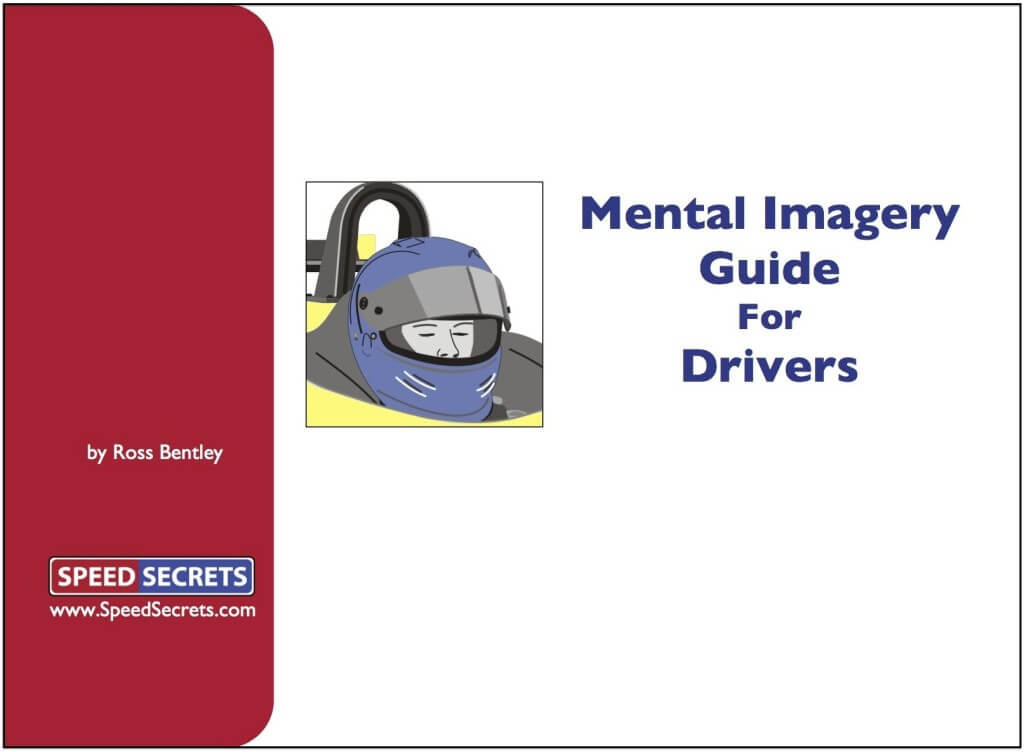Performance & Race Driving Tip
Speed Secret: There is no limit to what your mind is capable of.
Your brain doesn’t know the difference between a real and an imagined event. If you imagine something with enough realism, using many senses, your brain thinks it’s really happening, and will respond appropriately.
 Researchers have had weight-lifters mentally lift weights (imagining lifting weights in their mind), and guess what happened? Muscle fiber in the specific area of the body needed to lift that weight flexed and stressed, and over time actually strengthened (think about that the next time you’re laying on the couch thinking about exercising!).
Researchers have had weight-lifters mentally lift weights (imagining lifting weights in their mind), and guess what happened? Muscle fiber in the specific area of the body needed to lift that weight flexed and stressed, and over time actually strengthened (think about that the next time you’re laying on the couch thinking about exercising!).
Russian Olympic trainers had some of their athletes train for a period of time only using mental imagery, and they improved more than other athletes who practiced only physically. How can that be? These elite-level athletes were able to mentally play through their sport activities in so much detail, and do it so perfectly, that their brains saw it only as real practice – perfect practice. The athletes that practiced physically made some errors – that’s natural for even elite-level athletes – and so they improved their ability to make these errors.
Mental imagery, most often referred to as visualization, is an extremely powerful learning tactic. But the key is to make it real by using as many senses as possible. If you use only visual (which is where the inaccurate term “visualization” comes from), it will not be as effective as it could be. When you physically move your body, and imagine the sounds and even the smells, you’ll be “fooling” your brain in a good way.
I recommend the following process for the most effective mental imagery:
- Spend a little time before you start doing mental imagery and write out a few bullet points of the specific scenario you want to program. Then read it over a few times before you set it down and begin doing mental imagery. Writing a short narrative will help your mind stay focused on what you want during your mental imagery.
- Take a few minutes to relax and slow down your mind before doing mental imagery. Close your eyes, breathe slowly, and relax you body and mind before starting to imagine a specific scenario. A relaxed mind is much more receptive to being programmed than one that’s “wired.”
- Spend 15-20 minutes at night before going to sleep doing mental imagery, and then another 15-20 minutes in the morning to refresh what you imagined the night before.
- The more you use mental imagery, the better you’ll get at it – and the more effective it will be. If you do it every evening, and every morning, it won’t take long for you to notice a difference in the way you perform. Use as many senses as you can, making your imagery as real as possible.
- Make your setting as realistic as you can, too. As examples, sit in your car, sit in a chair at home that has a similar position as in your car, and/or wear your helmet and driving shoes.
- Use mental imagery to learn a track, improve a specific driving technique, or program a mindset/attitude (how you want to behave in certain situations).
One great thing about using mental imagery to program skills, techniques and mindsets is that you can do it virtually anywhere. Better yet, it’s the only way that you can practice perfectly every time (when you do something physically, you’re bound to make a mistake or two – and therefore, you’re programming making those mistakes).
I’ve written an eBook about mental imagery that provides much more background information, and more details on how, when, and where to use it. The eBook can be downloaded for $2.99 here.
Check back here often for more tips and advice for performance drivers, race drivers, high performance driving instructors, and anyone else interested in learning to get around race tracks quickly.
Please do me favor and share this now with others who you think would either learn something from it, or enjoy it, by clicking on any of the links below. Thank you!
